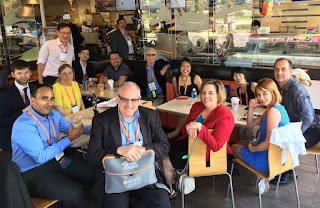 |
| Lord Justice Kitchin |
 In the original decision by Roger Wyand QC the scope of the series registration was discussed. One of the marks had a colour claim, but being an old registration it wasn't shown in colour. The other, presumably the one on the right was supposed to be in greyscale.
In the original decision by Roger Wyand QC the scope of the series registration was discussed. One of the marks had a colour claim, but being an old registration it wasn't shown in colour. The other, presumably the one on the right was supposed to be in greyscale.However, the judge interpreted the registrations as if they were one basing himself on the opinion of Mr Arnold QC as he then was in Sony Ericsson (o/138/06) (25 May 2006) that a series was "a number of different manifestations of what is in essence the same trade mark" and therefore any differences must be so insignificant that they go unnoticed by the average consumer. That is they satisfy the LTJ Diffusion v Sadas case. It is also stated in that judgement (Paragraph 65) that 'monochrome trademarks, all colours'. This we now know is not strictly correct after the adoption of the common communication of April 2014. However, the judge also concluded that he did not see the colour combination as being a part of the distinctiveness of the registered trade mark.
The reason I am writing about this decision is that Lord Justice Kitchin thinks that Arnold J was wrong 10 years ago to impose such a high standard of identity on series marks. He did not like this approach because it meant that you had to distil from the series some kind of "supervenient" mark with which all the marks in the series are identical. This is far too difficult and certainly doesn't satisfy the test that the graphical representation must be self-contained, clear, precise and readily accessible and intelligible. The easy way out is simply to say that the series of marks is a bundle of different marks registered under the same reference number. They must satisfy the requirements of the act (Section 41) but they need not be Sadas identical. This is what the Court of Appeal decided.
Accordingly, I am delighted that the very pragmatic and helpful series mark provisions of the UK Act survive and that they no longer need to be examined with the severity imposed upon them by Richard Arnold 10 years ago.



